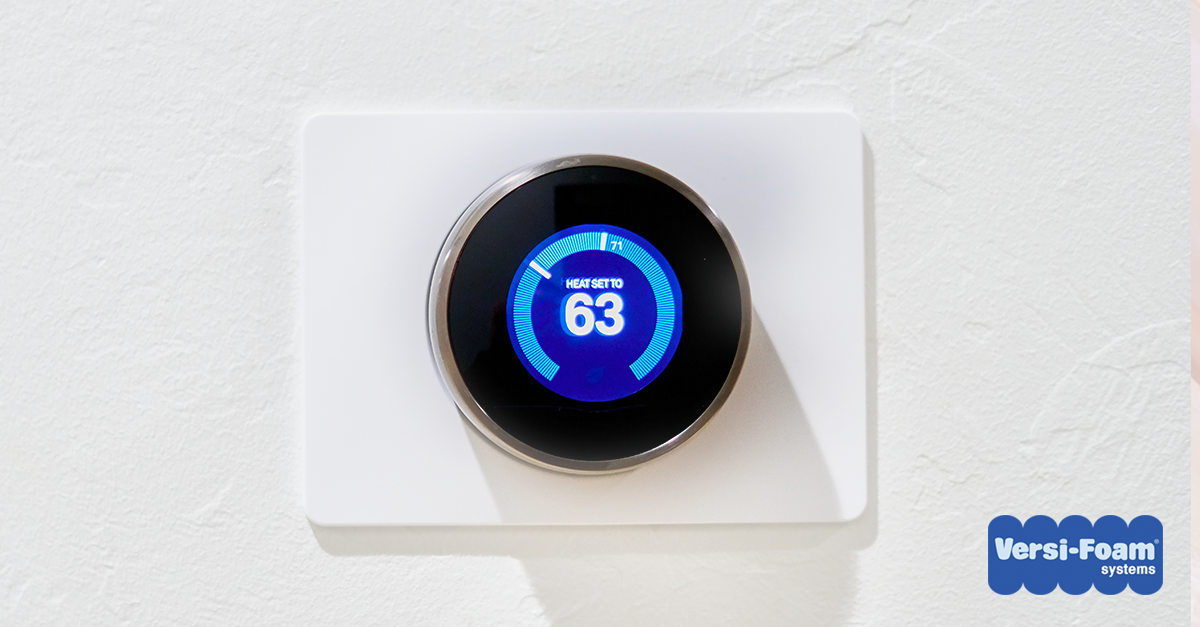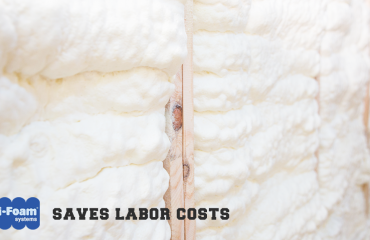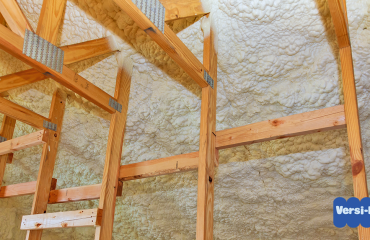About half of the average household’s energy budget goes to heating and cooling. This is a cost that you as a consumer have direct control over. You already know you can turn down your thermostat a few degrees in winter and up a few degrees in summer. But did you know that’s not all you can do to save energy costs? In fact, you don’t need to adjust your thermostat to uncomfortable levels to save money. Using the proper insulation will accomplish the same goal.
Deciding which type of insulation to install is often described as a balance of cost and performance. Choosing a lower initial cost means that the total cost of ownership will be spread out over the installation’s lifetime, i.e., every month in the form of higher ongoing energy costs.
There are three basic types of home insulation. Cellulose insulation is made of plant fibers and is one of the earliest insulation materials used. Fiberglass is an insulation material primarily composed of extremely fine glass fibers. Spray foam insulation is a spray-applied cellular plastic that’s made by combining chemicals to create foam.
Because spray foam virtually eliminates air infiltration, its insulating effectiveness is higher than either fiberglass or cellulose. Neither fiberglass nor cellulose creates an air seal while spray foam insulation does.
“Other products are insulation only, but spray-foam insulation is air-impermeable, which allows it to be an air barrier as well as insulation,” says Paul Duffy, vice president of engineering at foam manufacturer Icynene, in Mississauga, Ontario. “Typically, what happens with insulation products is that if there’s no air barrier, the thermal performance varies. That could have several consequences—increased heat flow and air leakage that can carry moisture into unwanted places, leading to mold.”
All three types of insulation are easy to install although each type does have its potential gotchas. Cellulose can settle and shift over time if it’s not installed properly. Fiberglass requires great attention to detail as even small gaps can significantly reduce its efficiency and the wall cavities need to be completely filled. While spray foam insulation kits have made installation easy for the average person, the installer does need to read the instructions carefully before beginning and perhaps watch a how-to video.
The location of the insulation is another important consideration. Spray foam is the best choice in moisture-prone areas, like basements, because it isn’t susceptible to mold like fiberglass is. Spray foam insulation, fiberglass, and cellulose are all environmentally friendly. They are each easy to install and safe to use with one small exception for fiberglass, since the fibers can be inhaled or get into the skin, causing irritation.
Spray foam insulation provides several important benefits that fiberglass and cellulose don’t. It dampens sound, protects against insects, and is moisture resistant. Spray foam insulation does initially cost more than either cellulose or fiberglass, but the overall cost is comparable when you consider the air barrier, the water-resistant barrier, and the vapor barrier. It is an added value that will pay itself back over time.
Choose VersiFoam. Find a distributor near you today!




